NOTE: WE DO NOT ENDORSE ANY PRODUCTS WHICH ARE DISPLAYED HERE. THE PICTURES SHOWN ARE FOR REPRESENTATION ONLY.
WET SUITS
How to take care of WET SUITS
Some wet suit care can make you wet suit last longer and can be the difference between one season or a good couple of years of use, of course depending on how frequently you use your wet suit. So take good care of it and it will keep you warm. Here are the do and don’t of the wet suit care.
1. HOT WATER RUINS NEOPRENE
In really hot water neoprene looses some of its flexibility. Getting out of your wet suit under a really hot shower after a cold water session might feel like the best thing ever, but not for your wet suit. So take your wet suit off first, then soak yourself in warmth.
2. SUN & UV RAYS AGE NEOPRENE
Do not leave your wet suit exposed to the sun when not necessary! Sun is the neoprene’s worst enemy. UV rays cause the neoprene to age quicker. Old neoprene gets harder and looses its flexibility. Dry your wet suit in the shadow if you can. If you dry it in the sun at least put it away as soon as it is dry. Store your wet suit in the dark place (closet) when you are not using it.
3. HOT TRUNK IS NOT A GOOD PLACE FOR A WET SUIT
Do not leave you Wet suit in the trunk of your car in a parking lot on a hot day. Cooking wet suits is the last resort only for when you are really hungry:).
4. DRY YOUR WET SUIT INSIDE OUT
Dry your wet suit inside out. So you will keep the flexibility of the outer side and if the wet suit is not completely dry when you are putting it on – you will still crawl into the drier side.
5. STORE IT NICELY, USE A WIDE HANGER
Store your wet suit on flat surface or wide coat hanger. Why a wide hanger? A narrow one can make permanent indents into wet suit shoulders. Do not smash the wet suit into a small drawer all wrinkled. It says so in the wet suit instructions for a reason.
Best way to hang it. Hanger could be a bit wider though.
6. SURF WAX ON NEOPRENE PROBLEM
Surf wax sticks to neoprene, get over it! There is no elegant way to get it off and it will rub on quickly again anyway.
7. HOW TO TAKE OFF YOUR WET SUIT WITHOUT GETTING SAND ON IT (MISSION IMPOSSIBLE)
There are two ways to do this:
- Easy way: when taking off your wet suit get off the sand and stand on grass, on a rock, on pavement, on the car mat… just not in the middle of the sandy beach. If it doesn’t work, wash it out in the sea after you change.
- Thinking ahead way: get yourself a wet suit changing mat or a big flexible plastic bucket and then stand on the mat or inside the bucket when changing. Then use the mat/bucket to transport your wet wet suit home.
8. CLEAN AND DRY YOUR WET SUIT QUICKLY
Once the wet suit is off, do not leave it to rot inside a bag, box wherever… all messy and sandy. Clean it and dry it. Regular care adds quite some time to the wet suit lifespan. Rinse with fresh water will remove sand and dirt but what is even more important it will remove salt. Salt crystals are also one of the enemies of neoprene. So make sure you always rinse your wet suit with fresh water before you start drying it!
If you use a plastic bucket to change/store your wet suit of if you throw your wet wet suit inside a dry bag (even better, you will need less water) you can use these two to rinse your wet suit right away. Have a jug of water in your car and then pour it inside the dry bag. Push and pull your wet suit a few times through the water and then take it out. It’s ready for drying.
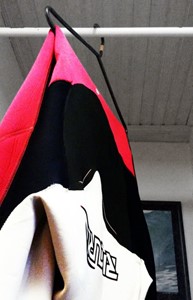
9. WASHING MACHINE NO NO
Do not wash you wet suit in the washing machine and dry it in a dryer! Clean it yourself. OK,.
10. IRONING? YOU ARE KIDDING, RIGHT?
It is not very wise to iron your wet suit.
11. BLEACH? ANOTHER NO WASHING POWDER
You should never use bleach or strong washing powder on your wet suit. But there are some mild washing powders made especially for washing your wet suits.
Basic reason is our sweat and body oils that our skin produces. These are breeding ground for the bacteria which are in fact the thing that smells bad in a wet suit. You can of course make your wet suit extra stinky if you are lazy – you leave your wet wet suit in a bag for a while instead of washing it right away.
The other reason for odour is your urine. Try not to pee (as much) in it, because pee also deteriorates the neoprene and leaves a funky smell.
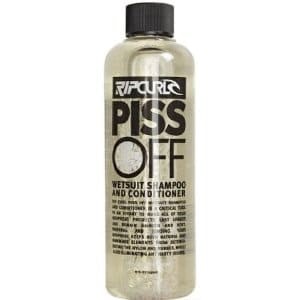
How To Get Rid Of Wet suit Smell
- PISS OFF – manufactured by RIP CURL, add water and the solution to remove the odour
- Add to tub or bucket Comfort fabric conditioner and soak it for 2- 3hrs to remove the odour and salt from the wet suit.
- Add dishwasher 2-3 caps to fresh water and soak it over period of 2-3 hrs remove the body oil and stains on the wet suit. later rinse and wash thoroughly
13. LENDING YOUR WET SUIT
Never lend your wet suit to your friend if he is heavier than you, your wet suit will stretch and soon it will be to big for you
Water Temperature Chart & Guide for Divers
Guide to choosing Wetsuit
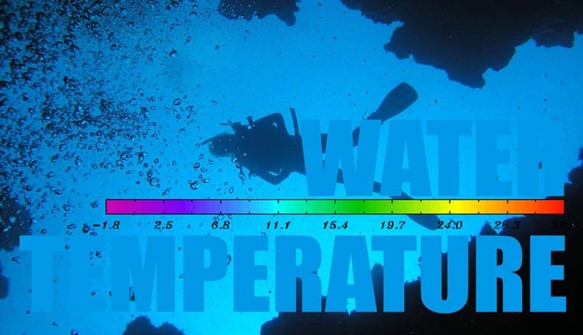
Warm water diving, most divers dream.
When planning a dive there are many things you need to take into consideration to ensure it is an enjoyable and safe experience. One of the most important factors is the temperature of the water because it will determine which type of wet suit you need to be wearing. The thickness of the wet suit will determine how cold of water you can dive in and how long you can remain in the water without putting yourself at risk of hypothermia.
Conditions change in the water depending on depth, season and other factors as well so it is critical that you know exactly what you’re diving into before you even step on the boat. These are the main factors to consider when choosing the thickness of your diving wet suit:
The Temperature of the Water
It may seem obvious to some, but the temperature of the water you’re diving into is one of the most important factors to consider before diving. Water can pull heat out of the body at a rate which is about 25 faster than air, (CONDUCTION) and since you’re entirely surrounded by it during a dive you want to know the exact temperature of the water.
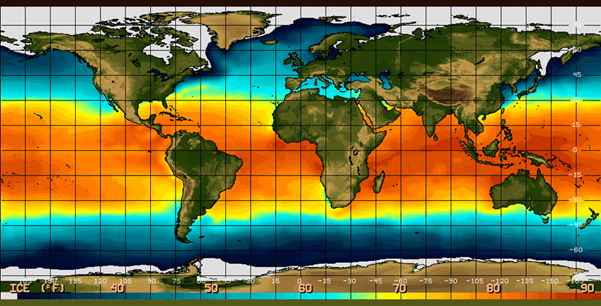
Diving Depth
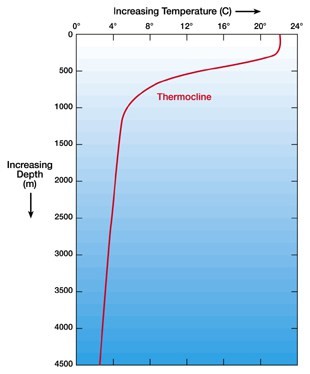
Thermocline – Depth at which the rate of decrease of temperature with increase of depth is the largest. Depending on the geographical location, the thermocline depth ranges from about 10m to 1000m.
The deeper into the water you dive the colder the water gets in most parts of the world. This is called thermocline, and it is an important factor when planning any dive. If we are physically exact the thermocline is where the drop of temperature with increasing depth is the greatest. Now usually thermocline appears at depths lower that the average dive depth but this can vary from place to place and there is always some temperature drop with increasing depth. In addition to the colder water at lower depths, the pressure of the water will compress the neoprene in your wet suit. As the tiny air bubbles within the neoprene have pressure applied to them they get smaller and can provide less insulation.
A 3mm neoprene suit will lose about 50% efficiency at a depth of 10 meters compared to at the surface. At 20 meters it has lost about 70%, and at 40 meters which is where most recreational divers swim you’re down to just 25% efficiency. So, if you’re diving with a 3mm wet suit it is the same as diving with a 1mm suit when you reach a depth of about 30 meters.
Keep in mind that this is just an estimation and not an exact science. Factors such as the quality of your wet suit, the actual temperature at varying depth and other things can result in dramatic changes to the insulation ability of any wet suit.
Activity
Depending on the activities you’re planning during a dive you might feel warmer or colder than normal as well. Dives where you’re moving around a lot will help you generate more body heat and keep warmer. Slower and more stationary dives will result in you getting colder faster.
Fit and Condition of Wet suit
A brand new wet suit which fits snugly will keep you warmer than one which you’ve been using for years. If you’re renting a wet suit it will likely be stretched out and not fit as well as a brand new one. Try to only dive when wearing a proper fitting wet suit to ensure it can keep you as warm as possible.
Duration or Number of Dives
The length of your dives will have a great impact on how cold you feel. The more time you’re spending in the water the colder you will get during each dive.
Normal Body Temperature
Each person is a little different in their normal body temperature. Some people always feel warm, others are constantly complaining of feeling cold. If you’re naturally colder then you’ll likely feel cold much more quickly than someone who naturally feels warm. Women are also typically going to get colder more quickly then men as well.
Choosing Thickness for Your Wetsuit
Why Not Just Get The Thickest Wet suit Possible?
After reading all that many people might think they should just go out and buy the thickest wet suit they can find to help keep them warm. Even if you get too warm during a dive you can always just let a little water in the suit to cool you down, right? Well, the fact is there are some disadvantages with thicker suits that should be taken into consideration. Thicker suits are more restrictive and can make you more clumsy during a dive. The thicker the wet suit the more resistance that is put on your limbs which can result in becoming tired more quickly.
Diving Wet suit Types
Wet suits for Warm Water Dives
Choosing Your Wet suit
Thicker wet suit is more expensive. So some new divers are tempted to choose an inexpensive option without really putting enough thought into it. Remember, diving can be dangerous if you don’t have the right equipment so you don’t want to put yourself at risk because you didn’t want to spend a little extra money. Buying a wet suit should be considered an investment and if you’re not ready to spend enough money to keep you safe then you should really just keep renting a suit so you can always dive with the proper type and thickness for any given area.
While there are many factors which must be taken into consideration for choosing the thickness of a wet suit, the following chart can help give you general guidelines. Remember, much of the heat you lose will be from areas like your head or hands if you’re not wearing coverings on these areas so always take all the factors into account before buying a wet suit.
Water Temperature / Thickness Recommended
Chart of Wet suit Thickness Based on Water Temperatures
75-85F / 24-30C – 1/16″ (1.6mm) neoprene with Lycra/Polartec or 1/8″ (3mm) neoprene
65-75F / 18-24C – 3/16″ (5mm) neoprene
50-70F / 10-20C – 1/4″ (6.5mm) neoprene, hood, boots, also gloves if needed- Semi Dry suit
35-50F / 2-10C – 3/8″ (9.5mm) neoprene, thick hood, boots, gloves (7mm) or dry suit
Short Wet suits: There are wet suits which have different amounts of coverage though so you can have flexibility in creating the perfect wet suit for your dive. These are good for warmer water dives.
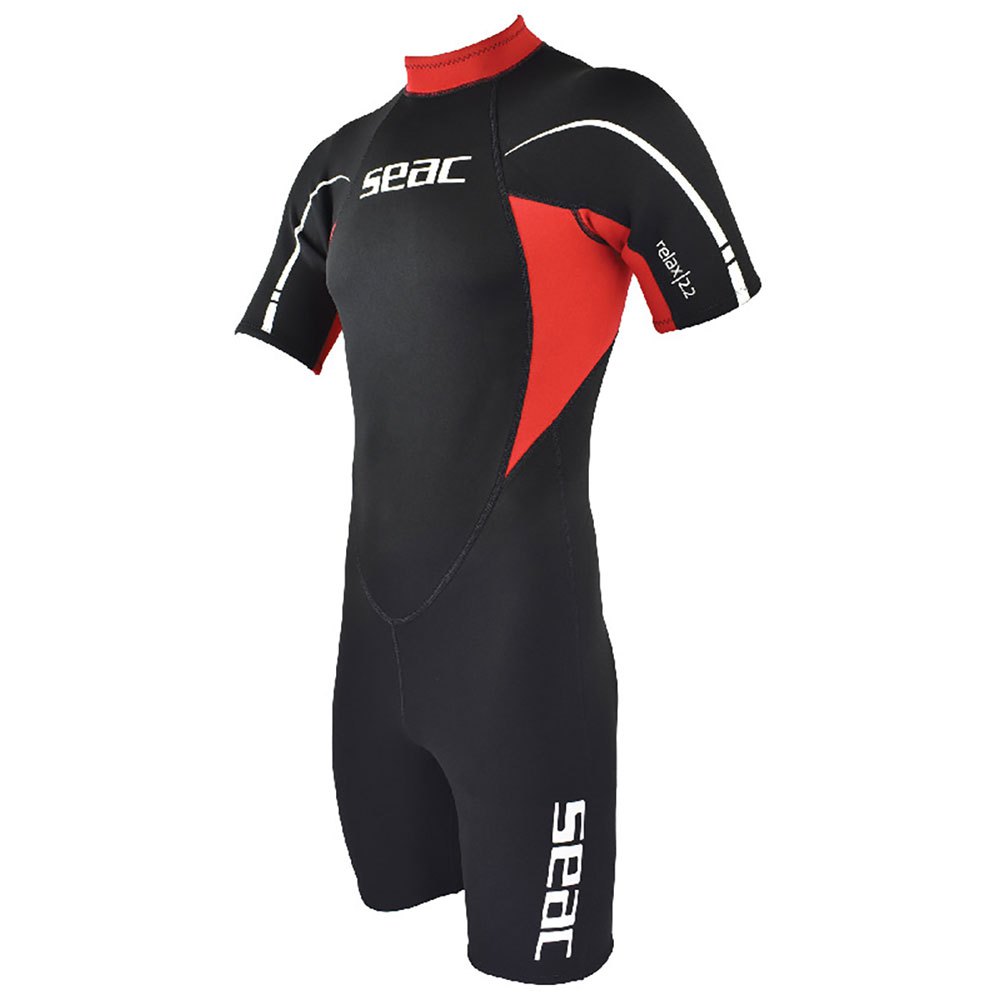
Full Length suits : which can cover you from head to toe using booties, gloves and hoods to make sure you’re as warm as possible. The problem is, of course, decreased mobility and added weight. When looking at all your options don’t be too quick to choose the smallest or thinnest options available. If you’re cold while diving it is not only unpleasant, but it can be very dangerous.
If you’re diving in warm water, which is anything from about 78 to 85 degrees you’ll want a warm water wet suit. Dives in the Mediterranean or Oceania or other tropical areas are perfect for this type of diving. Most of these types of wet suits are between ½ millimeters and three millimeters thick.
Remember, however, if you plan on diving deeper into the water the temperature will drop so you’ll want to add a second layer to a thin wet suit. A shorty or tunic which is three millimeters thick can be combined with a thin jumpsuit to give you the ability to adjust based on each specific dive you’re going to make.
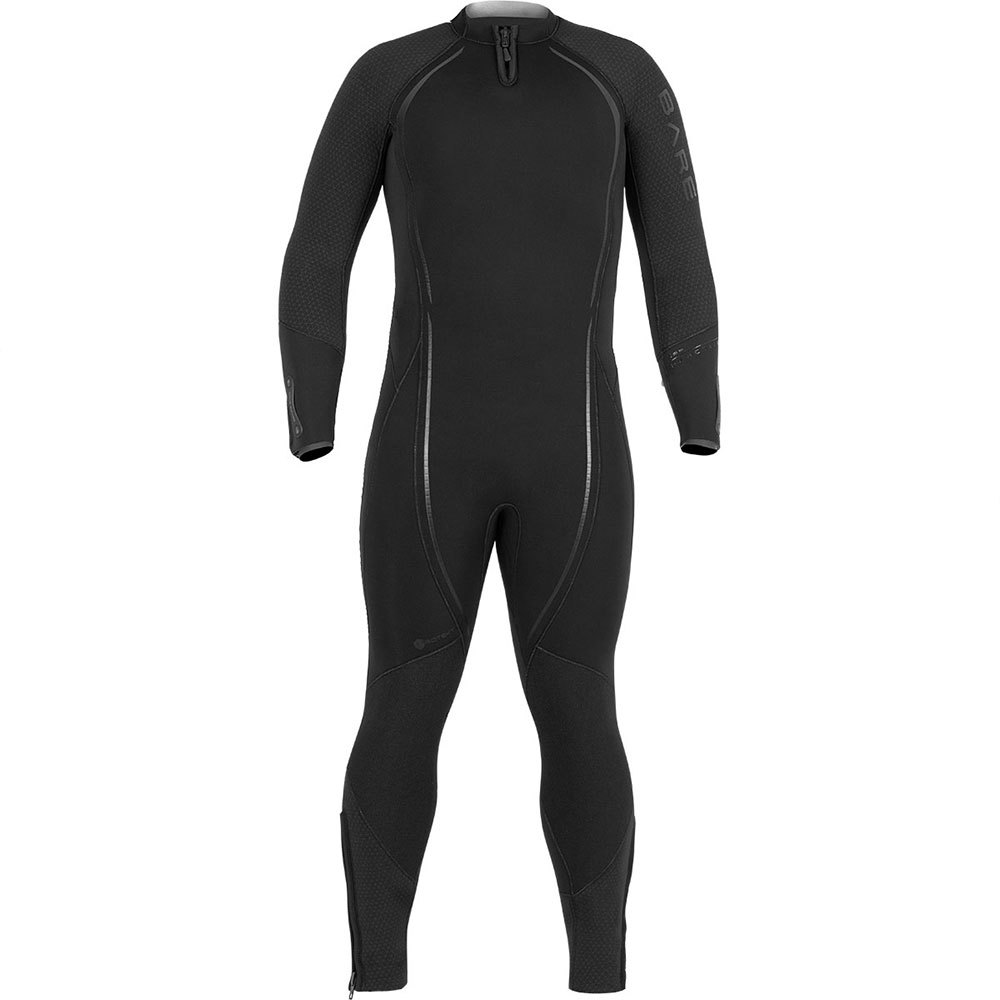
Cold Water Diving
There are many cold water diving sites along the West Coast of the US ranging from Oregon and Washington to parts of California. On the other side of the country you can find sites for great dives off the coast of several New England states. The Great Lakes are also excellent for freshwater dives which can be quite cold. Any water which is between 45 and 60 degrees is considered a cold water dive. Choosing a suit which is about six and a half to seven millimeters is good for this type of diving.
Temperatures at these levels can be far more than just uncomfortable for divers if they don’t have a proper suit on, they can be downright dangerous. Wearing a good suit with additional layers both at the core and on yoru extremities is critical for your own protection. A vest, booties, gloves and a hood should be considered the minimum for cold water diving.
You can even consider using a dry or semi-dry wet suit to help keep your body dry during your dive. Wet suits can keep you warm but they will let some water in which can quickly drop your body temperature when diving in these waters. If you’re just getting into the sport of diving make sure you don’t start out with a cold water dives as they can be very dangerous.
SEMI DRY SUIT
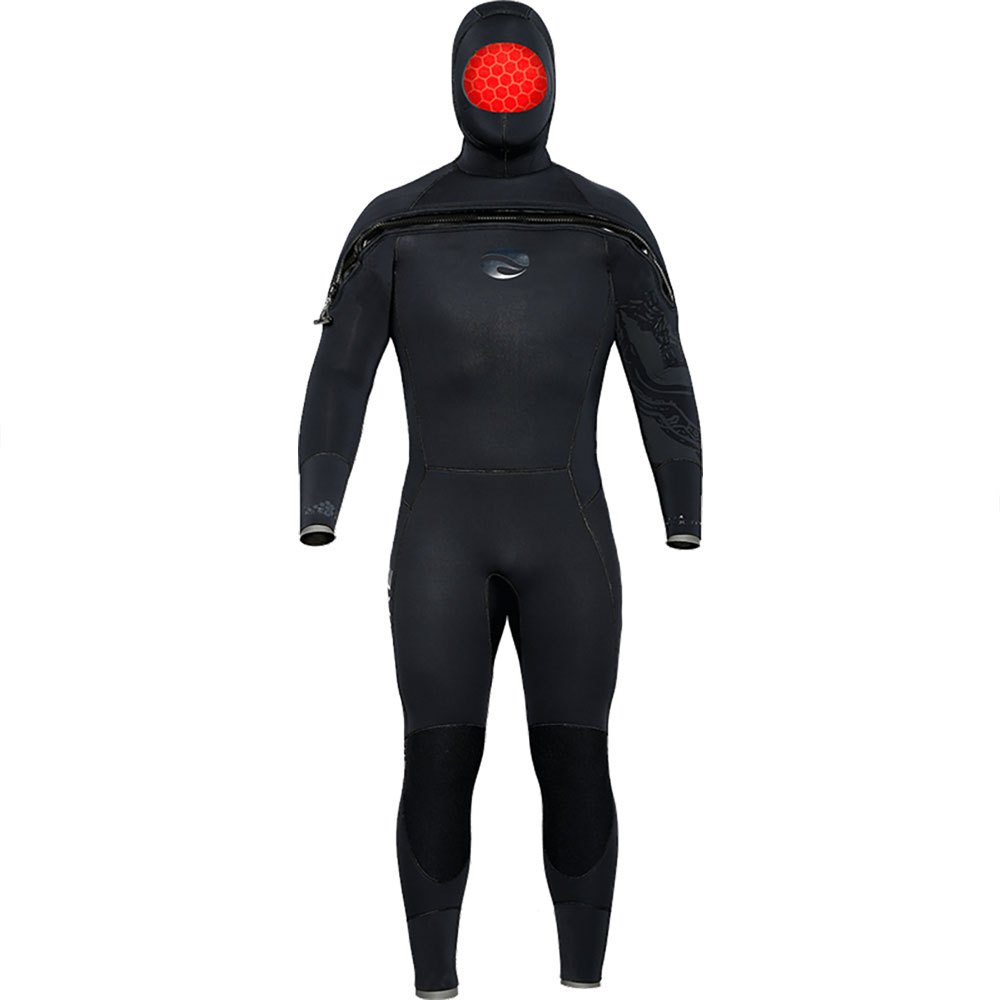
This is best used in temperatures between 10-20 deg Celsius and above, it is about 7mm and having zipper from the front or the back it will work like a wetsuit and keeps you warm during the dives. it has cuffs which will seal at the extremities so no water enters. you will need extra weights to carry you down, moving in water is bit cumbersome, due to thickness of suit,
Dry Suits
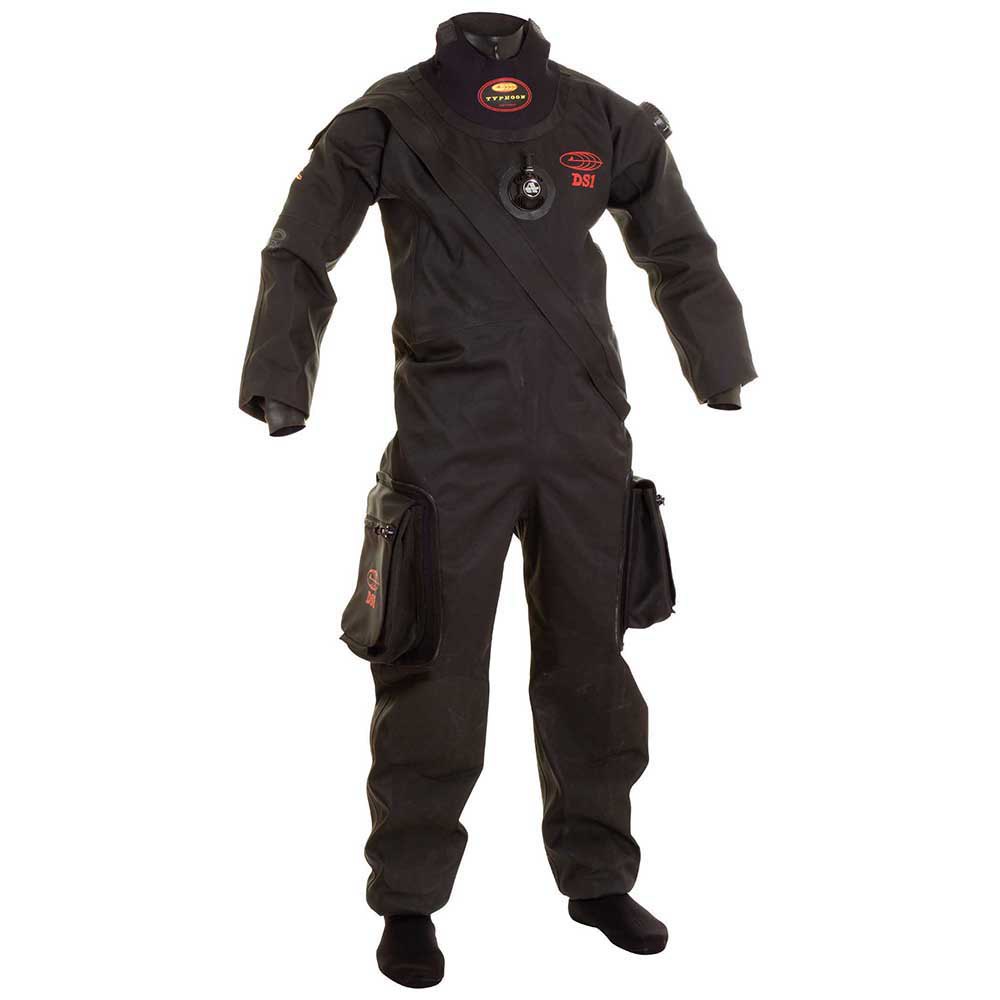
Dry suit for extremely cold water diving.
A dry suit is going to be much more expensive than a wet suit, but they come with some significant advantages. First, they are created with special seams and designed specifically to keep all the water out of the suit. This means you can stay entirely dry during your entire dive. With this in mind many people who dive with these types of suits will wear sweatshirts or fleece under the dry suit to keep warm. Since cold water diving is only for experienced individuals. You should do at least 20 dives to get certified diver with dry suit
you will need argon gas for the suit inflation, you will add air into the wet suit for buoyancy instead of air into the BCD or bladder for TEC dive
